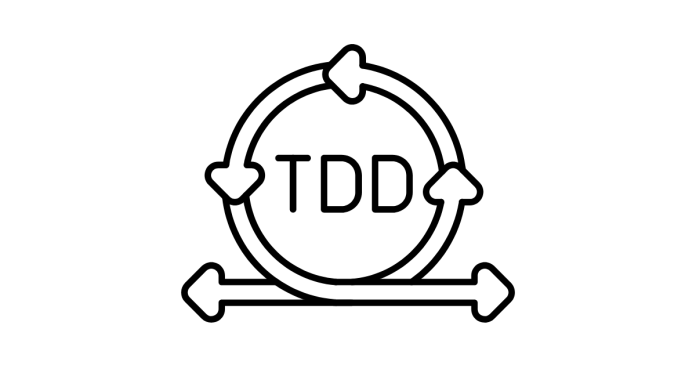Test-Driven Development (TDD) is a software development methodology where tests are written before the actual code. It emphasizes writing automated tests to define the behavior of small units of code, and then developing the code to pass these tests. TDD is an integral part of Agile development and is used to ensure code quality and maintainability.
TDD Process: The Red-Green-Refactor Cycle
TDD follows a simple, repetitive cycle known as Red-Green-Refactor:
- Red:
- Write a failing test for a new feature or functionality that you intend to implement. Since the feature hasn’t been developed yet, the test will fail.
- Green:
- Write just enough code to make the test pass. The code should be simple and focused on passing the test, without concern for optimization at this stage.
- Refactor:
- Once the test passes, refactor the code to improve its structure, readability, and efficiency without changing its behavior. Ensure the test still passes after refactoring.
This cycle is repeated for each small functionality until the entire system is implemented and tested.
Benefits of Test-Driven Development
- Improved Code Quality:
- TDD helps ensure that the code works as expected from the beginning and reduces the chances of bugs.
- Less Debugging Time:
- Since tests are written first, issues are usually caught early in the development process, reducing time spent on debugging later.
- Better Design:
- Writing tests forces developers to think about the design and behavior of the system before coding, leading to better-structured code.
- Increased Confidence in Refactoring:
- With a comprehensive suite of tests, developers can confidently refactor code, knowing that any issues will be caught by failing tests.
- Documentation:
- The tests themselves serve as documentation for how the code is supposed to behave. New developers can refer to them to understand the system’s requirements.
Challenges of Test-Driven Development
- Time-Consuming:
- Initially, TDD may seem slower due to the time spent writing tests before coding. However, over time, it can lead to faster development due to fewer bugs and less rework.
- Learning Curve:
- TDD requires a mindset shift for developers unfamiliar with the approach. It can take time to adapt to the test-first philosophy.
- Overhead in Writing Tests:
- In some cases, writing tests for every small piece of functionality might seem like overhead, especially for smaller projects.
TDD Workflow Example
- Write a test:
Suppose you’re building a method to add two numbers. The test could look like this:def test_addition(): assert add(2, 3) == 5 - Run the test:
Initially, theaddfunction doesn’t exist, so the test fails (Red). - Write the minimal code to pass the test:
def add(a, b): return a + b - Refactor the code if necessary (Green), ensuring it’s still passing the test.
- Repeat for other functionalities and features.
Conclusion
Test-Driven Development (TDD) is a disciplined approach that emphasizes writing tests before implementing features, aiming for better code quality, reduced bugs, and more maintainable software. While it has challenges, such as an initial time investment and a learning curve, its long-term benefits in creating reliable software are substantial.



